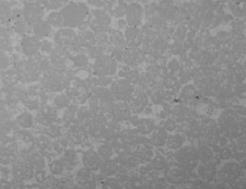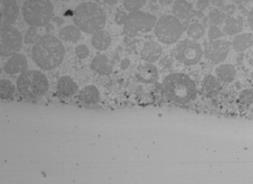Process for laser cladding of nickel-based tungsten carbide on surface of nickel-aluminum bronze
A nickel-based tungsten carbide, laser cladding technology, applied in metal material coating process, coating and other directions, can solve the problems of relatively sensitive phase selective corrosion, poor wear resistance, shortened life and other problems, to achieve wide application benefits, Enhanced corrosion resistance and increased service life
- Summary
- Abstract
- Description
- Claims
- Application Information
AI Technical Summary
Problems solved by technology
Method used
Image
Examples
Embodiment Construction
[0020] In order to enable those skilled in the art to better understand the solutions of the present invention, the technical solutions in the embodiments of the present invention will be clearly and completely described below in conjunction with the drawings in the embodiments of the present invention.
[0021] This example provides an example of laser cladding and repairing marine nickel-aluminum bronze plates to illustrate a specific implementation of a process for laser cladding nickel-based tungsten carbide on the surface of nickel-aluminum bronze. Specific requirements: no pores, no cracks, hardness > 48HRC, The cladding layer thickness > 2.4mm, the steps are:
[0022] ① The surface of nickel aluminum bronze is cleaned: remove burrs and oil stains;
[0023] ② Set the process parameters through the laser cladding equipment, and perform laser cladding on the nickel-aluminum bronze plate;
[0024] ③ After the laser cladding is completed, after the nickel-aluminum-bronze pl...
PUM
| Property | Measurement | Unit |
|---|---|---|
| thickness | aaaaa | aaaaa |
| thickness | aaaaa | aaaaa |
| thickness | aaaaa | aaaaa |
Abstract
Description
Claims
Application Information
 Login to View More
Login to View More - R&D
- Intellectual Property
- Life Sciences
- Materials
- Tech Scout
- Unparalleled Data Quality
- Higher Quality Content
- 60% Fewer Hallucinations
Browse by: Latest US Patents, China's latest patents, Technical Efficacy Thesaurus, Application Domain, Technology Topic, Popular Technical Reports.
© 2025 PatSnap. All rights reserved.Legal|Privacy policy|Modern Slavery Act Transparency Statement|Sitemap|About US| Contact US: help@patsnap.com



